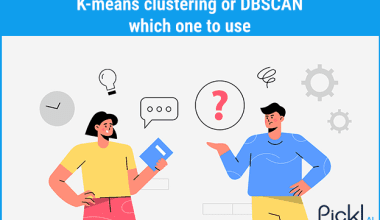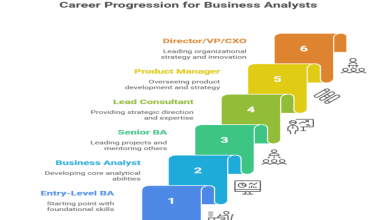Summary: Discover the power of API integration. This guide explains how connecting applications through APIs boosts efficiency, streamlines workflows, and enhances user experiences. Explore use cases, types, and tools to unlock innovation and automate your business processes for strategic growth and a competitive edge in the digital landscape.
Introduction
In today’s digitally driven world, businesses rely on a multitude of applications to keep their operations running smoothly. This is where API integration comes in, acting as the crucial link that allows different software systems to communicate and work together seamlessly.
This blog post will explore the fundamentals of API integration, its importance, various use cases, and the benefits it brings to businesses of all sizes.
Key Takeaways
- API integration connects applications, enabling seamless data exchange and automation.
- It boosts operational efficiency by automating workflows and reducing manual tasks.
- Real-world examples include social logins and integrated payment gateways.
- Integration platforms simplify connecting apps with pre-built tools and connectors.
- Adopting API integration is crucial for modern business agility and innovation.
What is API Integration?
Think of an API (Application Programming Interface) as a messenger that allows different software applications to talk to each other. API integration is the process of connecting two or more applications using their APIs to enable them to exchange data and functionality.
This creates a unified ecosystem where software components can work together harmoniously, eliminating information silos and maximizing the value of each application.
For instance, when you book a hotel online and see a map of the location, that’s an API integration example at work. The hotel’s booking website uses hotel APIs to pull data from a mapping service like Google Maps to display the location.
This seamless connection enhances the user experience without requiring the booking site to build its own mapping technology from scratch.
The Importance of API Integration
In our interconnected digital landscape, API integration is no longer just a technical convenience; it’s a strategic business imperative. It fosters operational efficiency by automating tasks, streamlining workflows, and eliminating the need for manual data entry, which in turn reduces the risk of human error.
By connecting disparate systems, businesses can reduce errors, minimize duplicated efforts, and optimize how they use their resources.
Furthermore, API integration empowers businesses to deliver exceptional customer experiences. By integrating with third-party services, companies can offer a wider range of features and functionalities without having to develop everything in-house.
API Integration Use Cases
The applications of API integration are vast and span across numerous industries. Here are a few examples:
E-commerce
Integrating e-commerce platforms with payment gateways streamlines the checkout process for customers. This allows for a variety of payment options and a frictionless transaction process, which can improve conversion rates.
Retail
In retail, API integrations connect online shops with in-store systems. They update inventory in real-time, manage customer information, and process transactions.
Healthcare
API integrations are transforming healthcare by enabling the secure sharing of patient records, lab results, and other vital information between different providers. This improved communication leads to better patient care and more efficient workflows.
Travel and Hospitality
The travel industry heavily relies on API integration to connect booking systems, flight information, and hotel management. This allows travel websites to aggregate data from various airlines and hotels, providing users with a comprehensive view of their options.
Finance
In the financial sector, API integrations connect various services like banking and payment systems. This facilitates secure transactions, automates financial tasks, and provides real-time data on accounts and market trends.
Examples of API Integration
Many of the apps and websites we use daily utilize API integration. Here are a few prominent examples:
Social Media Logins
When you see “Login with Facebook” or “Login with Google” on a website, that’s an API integration. It simplifies the registration process for users by allowing them to use their existing social media credentials.
Ride-Sharing Apps
Ride-sharing services use mapping APIs to provide real-time tracking of vehicles and geolocation services. For instance, a food delivery app might integrate with Google Maps to show users the progress of their order.
Communication Platforms
Integrations with messaging and communication platforms like Slack and Twilio help teams improve collaboration and streamline important workflows.
Types of APIs
APIs come in various types, each serving different purposes and levels of accessibility. Understanding the main categories—open, internal, partner, and composite APIs—helps organizations choose the right approach for integration, security, and collaboration, ensuring seamless connectivity between systems, applications, and business partners in today’s digital landscape.
Public APIs (Open APIs)
These are publicly available for any developer to use with minimal restrictions. They often require registration and an API key for authentication. Many public APIs follow the OpenAPI standard.
Private APIs (Internal APIs)
These are designed for use within a specific organization to connect internal systems and data They are not exposed to external users.
Partner APIs
These APIs fall somewhere between public and private. They are accessible to specific business partners to facilitate business-to-business integrations.
Composite APIs
These APIs combine multiple API calls into a single call, which can streamline complex operations and reduce the volume of data being sent.
Common API Protocols, Styles, and Languages
Common API protocols, styles, and languages include REST, SOAP, GraphQL, and gRPC. REST uses standard HTTP methods for resource-based communication, SOAP relies on XML messaging with strict standards, GraphQL enables flexible queries via a single endpoint, and gRPC supports efficient remote procedure calls with low latency.
REST (Representational State Transfer)
This is a popular architectural style for designing networked applications. REST APIs use standard HTTP methods like GET, POST, PUT, and DELETE to interact with resources.
SOAP (Simple Object Access Protocol)
This is a more structured, XML-based protocol for exchanging information. It’s known for its high level of security and standardization.
GraphQL
This is a query language for APIs that allows clients to request exactly the data they need, which can be more efficient than traditional REST APIs.
RPC (Remote Procedure Call)
This protocol allows a program on one computer to execute a procedure or subroutine on another computer without the need for the programmer to explicitly code the details for the remote interaction.
Key Features of API Integration Platforms
For businesses looking to implement and manage multiple API integrations, dedicated API integration tools and platforms can be invaluable. Here are some key features to look for:
Pre-Built Connectors
Modern API integration platforms provide a rich library of standardized, ready-to-use connectors for popular business applications—such as CRMs (Salesforce, HubSpot), ERPs, databases, and cloud services.
Benefits
These connectors drastically accelerate the integration process by reducing or eliminating custom code and manual configuration. They embody best practices, ensure consistency, and are easily configurable to fit specific organizational requirements.
Businesses can connect systems like e-commerce platforms to inventory systems or integrate marketing tools without specialist development.
Low-Code/No-Code Interfaces
Leading platforms offer intuitive, drag-and-drop interfaces that allow users to build and manage integrations visually, minimizing the need for programming knowledge.
Benefits
This democratizes integration by empowering non-technical users (such as business analysts and operations staff) to automate workflows, manage APIs, and design data pipelines without relying heavily on IT teams. Organizations benefit from faster deployment and cross-functional collaboration.
Real-Time Data Synchronization
Description: API integration tools are optimized for real-time or near-real-time data synchronization, ensuring that changes in one system (like a sales order) are immediately reflected across connected platforms.
Benefits
Real-time syncing supports seamless operations, improves data accuracy, and underpins time-sensitive business processes such as order fulfillment, inventory management, and customer support.
Security and Governance
Integration platforms include robust security features as standard. These often encompass encryption, role-based access controls, authentication protocols (OAuth, SAML), and detailed audit logs.
Benefits
Organizations can confidently process and share sensitive data between systems, stay compliant with industry regulations (like GDPR or PCI-DSS), and enforce consistent security policies across all integrations.
Monitoring and Analytics
Comprehensive monitoring dashboards and analytics are built into most platforms, providing visibility into API usage, system health, and performance.
Benefits
With proactive alerts and detailed reports, teams can detect issues early, optimize API performance, ensure service-level agreement (SLA) compliance, and gain actionable insights to refine business processes.
Benefits of API Integration
API integration offers significant benefits for businesses and developers by connecting software systems efficiently and enabling automated, real-time data flows. The advantages of implementing a solid API integration strategy are numerous and impactful:
Improved Productivity
By automating repetitive tasks and streamlining workflows, API integration frees up employees to focus on more strategic initiatives.
Enhanced Customer Experience
Integrating with various services allows businesses to offer more features and a more seamless experience to their customers.
Increased Efficiency
Automating data exchange between systems eliminates manual data entry and reduces the likelihood of errors.
Greater Agility and Innovation
APIs enable businesses to quickly connect with new technologies and services, fostering innovation and allowing them to adapt to changing market demands.
Cost Savings
Instead of building every feature from scratch, businesses can leverage existing solutions through APIs, significantly reducing development costs.
Conclusion
In a world where software applications are at the core of business operations, the ability to connect them effectively is paramount. API integration is the key that unlocks this connectivity, enabling businesses to automate processes, improve efficiency, and deliver superior customer experiences.
By understanding the API integration meaning and leveraging the right API integration services and API integration tools, organizations can create a more agile, innovative, and successful future.
Frequently Asked Questions
What is an API integration?
An API integration is the process of connecting two or more software applications via their APIs (Application Programming Interfaces). This connection allows them to exchange data and functionality automatically, without any manual intervention.
Why is API integration important?
API integration is crucial for businesses because it enables different software systems to work together seamlessly. This leads to increased efficiency, improved data accuracy, and the ability to automate workflows, ultimately saving time and money.
How does API integration work?
API integration works by using a set of rules and protocols defined by the API to establish a connection between two applications. Once connected, the applications can send requests and receive responses, allowing them to share data and trigger actions in each other.
Where is API integration used?
API integration is used across a wide range of industries and applications. Common use cases include connecting e-commerce platforms with payment gateways, integrating CRM systems with marketing automation tools, and syncing data between cloud services.



